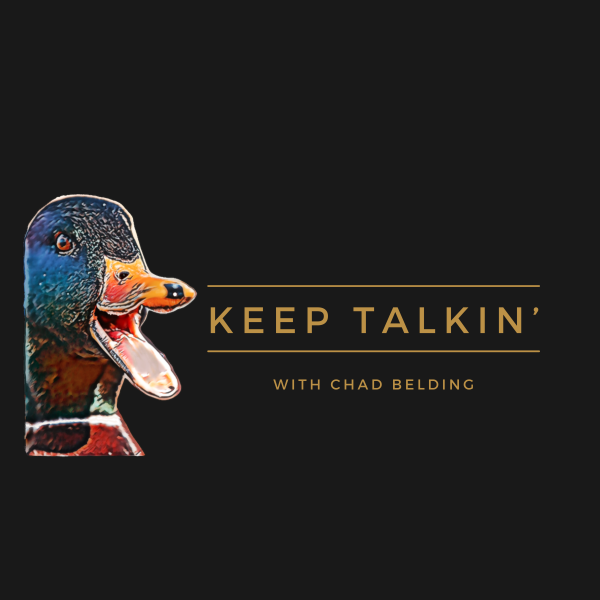
Ever find yourself daydreaming of waterfowl and wondering if they're thinking about you too? Haha, well chances are pretty good they aren't, but it does leave a person wondering, “what are they doing now?” Reports are starting to trickle in on the successes and struggles of this breeding and rearing season, so let's dive into what we know so far, and what we may be able to expect for this upcoming fall!
Mixed Results Across North America
The 2024 waterfowl breeding season has been a rollercoaster. In critical breeding areas like the Prairie Pothole Region (PPR), which spans parts of the Dakotas, Saskatchewan, and Manitoba, late-season rains in May and June were a game-changer. Droughts have been a large topic of concern for the waterfowl community in many areas that typically hold breeding and nesting habitats for many waterfowl species. However, timely precipitation in the PPR region has been crucial for renesting and brood rearing, giving a much-needed leg up for duck production. Thanks to our friends in organizations like California Waterfowl, Delta Waterfowl, Ducks Unlimited, and organizations alike, wetland restoration projects and wildlife reservations are strongholds for success for our feathered friends, despite an overall massive decline in these habitats over the years. (Delta Waterfowl, U.S. Fish and Wildlife Service).
Population and Habitat Conditions
According to the 2023 Waterfowl Population Status report, the breeding duck population experienced a 7% decline from the previous year, with pond counts showing a 9% decrease. However, these late-spring rains have brought on a more optimistic outlook.. Key areas including southern Saskatchewan and the Dakotas have maintained sufficient water levels, which is vital for success stories, especially in duckling survival rates.
While some parts of the Canadian prairies have faced significant droughts, regions like Quebec and Ontario continue to have good-to-great conditions for breeding and rearing ducks. However, wildfires have become a huge concern in northern Canada, and they could potentially impact nesting habitats if they spread southward (Delta Waterfowl).
Atlantic Flyway
Conditions remain favorable throughout the eastern survey areas, supporting strong breeding populations of black ducks and eastern mallards (Delta Waterfowl).
Pacific Flyway
California continues to maintain excellent breeding conditions, a positive sign for resident mallard populations. Alaska's river deltas, especially the Yukon region, also show excellent conditions for pintails and other species (Delta Waterfowl).
Factors Affecting Production
A significant factor working in this year's duck production favor has been predation. A long harsh winter in the Dakotas and southern Manitoba reduced the populations of typical duck-nest predators like raccoons and skunks. The reduction in predation pressure is projected to positively impact the overall hatching success of ducks in these regions. (An Official Journal Of The NRA).
What Are They Up To?
During the summer, we know wild waterfowl are consumed with breeding, nesting, and raising their young. - Dabbling ducks, such as mallards and teal, prefer shallow wetlands, ponds, and marshes, whereas diving ducks like canvasbacks and redheads choose larger deeper water bodies with lots of aquatic vegetation.
After breeding, nesting, and the magic of hatching, hens will lead their ducklings to water almost immediately, where they can feed on invertebrates, insects, and aquatic plants. This period is critical and vulnerable as for ducklings to grow rapidly, they need a rich and plentiful diet to develop flight feathers and gain strength for flight.
Another significant summer activity for wildfowl is molting, the process of shedding and regrowing feathers. Molting usually occurs after the breeding season and during this time, they lose their flight feathers and become temporarily flightless for several weeks. Waterfowl need to seek out safe, secluded areas with ample food and protection from predators to survive this vulnerable stage.
As summer rolls along, waterfowl start preparing for the best time of year, the fall migration! Preparation for the journey involves building up fat reserves and practicing flight. Ducks and geese increase their food intake, focusing on grains, seeds, aquatic plants, and small invertebrates to accumulate the required energy for their long journeys. (U.S. Fish and Wildlife Service, An Official Journal Of The NRA).
Migration Patterns
Early migrators like blue-winged teal and pintails often leave their breeding grounds as soon as late August, while late migrators like mallards and some Canada geese typically depart in November or December. Migration timing is another complex topic, with some birds leaving according to weather conditions, and some who we refer to as “calendar birds,” leaving as their built-in biological clock tells them it's time to fly.
Four Main Flyways
Waterfowl use traditional migratory routes known as flyways. The four main flyways in North America are:
Atlantic Flyway: Extends from eastern Canada down the East Coast to the Caribbean and South America. Key species include black ducks, Atlantic brant, and various species of diving ducks.
Mississippi Flyway: Runs from the Great Lakes through the Mississippi River Valley to the Gulf of Mexico. It is a vital route for mallards, wood ducks, and snow geese.
Central Flyway: Covers the central United States from Canada to Mexico. Species like pintails, redheads, and greater white-fronted geese are common travelers.
Pacific Flyway: Stretches along the West Coast from Alaska to Central America. Key species include northern pintails, wigeons, and Pacific brant
So, while the situation is complex, and mother nature always has the power to flip things on its hat when we least expect it, so far this upcoming hunting season is looking cautiously optimistic! Keep an eye on regional updates and prepare for a potentially great hunting season, especially in areas within the Prairie Pothole Region and other key breeding grounds.
Gear up, stay informed, and get ready for an exciting season. Let’s keep talkin’ and share our waterfowl passion! Email us @ Keeptalkin@tflproductions.com